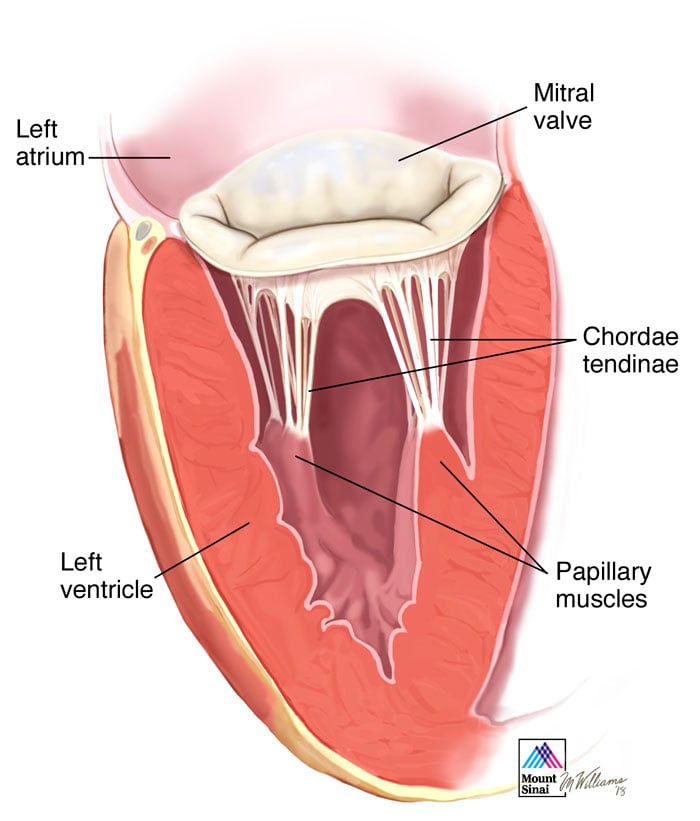Papillary Muscles and the Left Ventricle
Because the annulus resides in the left atrio-ventricular groove, and the chordae tendinae are connected to the ventricle via the papillary muscles, mitral valve function is integrally related to the ventricle. There are two papillary muscles arising from the area between the apical and middle thirds of the left ventricular wall: the antero-lateral papillary muscle is often composed of one body or head, and the postero-medial papillary muscle usually with two bodies or heads. Each papillary muscle provides chordae to both leaflets. The antero-lateral papillary muscle blood supply is from the left anterior descending and the diagonal or a marginal branch of the circumflex artery. The left circumflex or right coronary artery (depending on dominance) provides the blood supply to the postero-medial papillary muscle. Because of its single system of blood supply, this papillary muscle is particularly prone to injury from myocardial infarction. In the case of advanced Barlow’s disease, the papillary muscle may become calcified and restrict chordae and leaflet motion. The attachment of the papillary muscles to the lateral wall of the left ventricle makes the ventricular wall also an integral part of the mitral valve complex. Chronic or acute left ventricular dilatation can lead to papillary muscle displacement with increased leaflet tethering due to tension on chordae tendinae, as well as annular dilatation, leading to the axiom “that mitral regurgitation begets mitral regurgitation.”
*Modified from Carpentier A, Adams DH, Filsoufi F. Carpentier’s Reconstructive Valve Surgery. From Valve Analysis to Valve Reconstruction. 2010 Saunders Elsevier.
Teaching Excellence to Others
Over 500 surgeons, of all levels of experience, have come to Mount Sinai to learn advanced reconstructive mitral valve repair techniques from Dr. Adams and his team in the Mitral Foundation Center. We regularly lead mitral valve repair workshops around the globe and, to date, have educated surgeons from over 60 countries.
